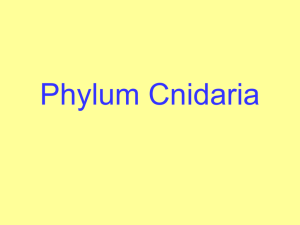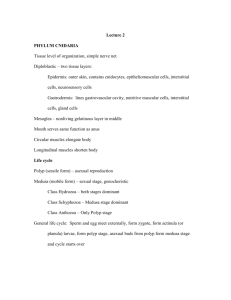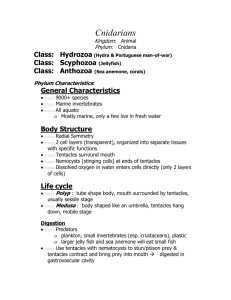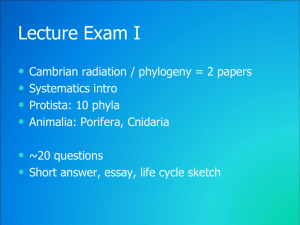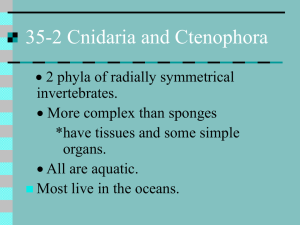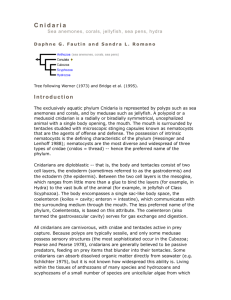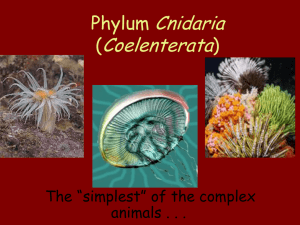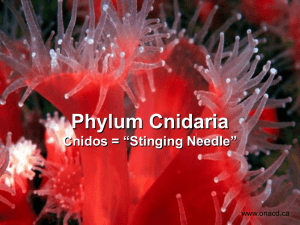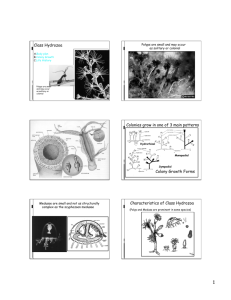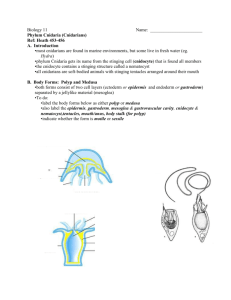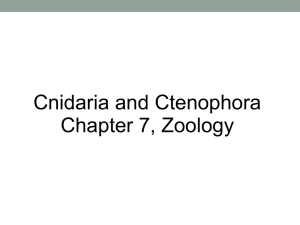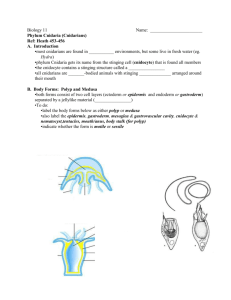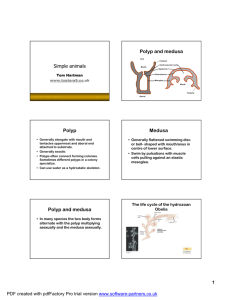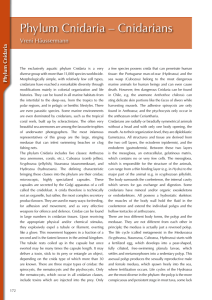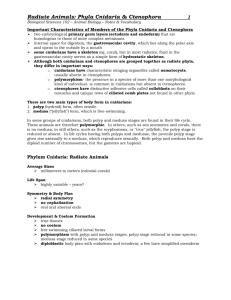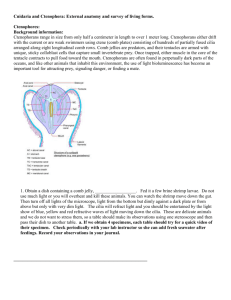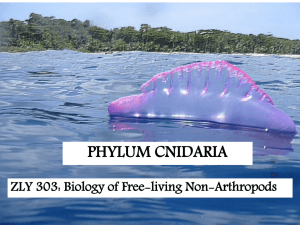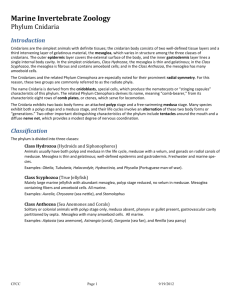Characteristics of Phylum Cnidaria
advertisement
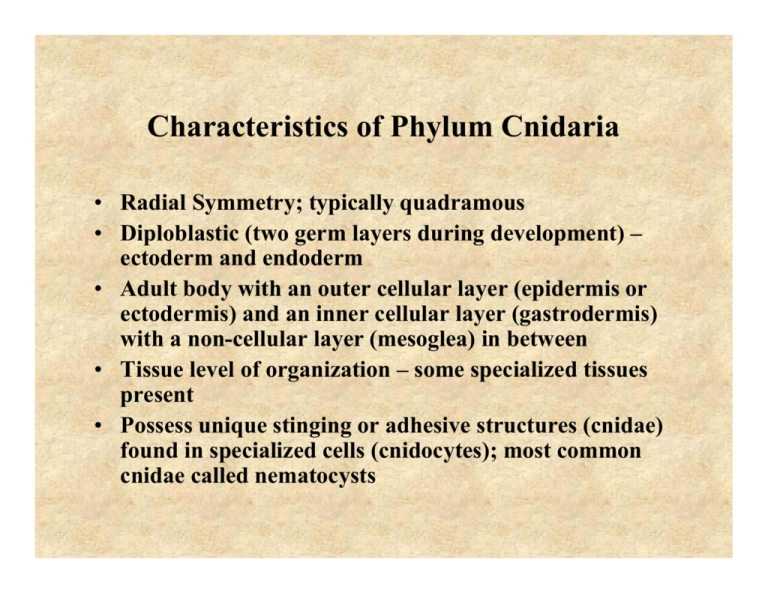
Characteristics of Phylum Cnidaria • Radial Symmetry; typically quadramous • Diploblastic (two germ layers during development) – ectoderm and endoderm • Adult body with an outer cellular layer (epidermis or ectodermis) and an inner cellular layer (gastrodermis) with a non-cellular layer (mesoglea) in between • Tissue level of organization – some specialized tissues present • Possess unique stinging or adhesive structures (cnidae) found in specialized cells (cnidocytes); most common cnidae called nematocysts Characteristics of Phylum Cnidaria • Musculature formed largely by myoepithelial cells (=epitheliomuscular cells) • Simple nerve net forms a “nervous system” • Alternation of generation with an asexually reproducing polyp stage and a sexually reproducing medusa stage; variations of this strategy exist throughout the Cnidaria • Typically have a ciliated, motile planula larvae Phylum Cnidaria • Two adult forms in life cycle – Polyp – Medusa • Alternation of Generation Hydra - Representative Cnidarian Reproduction • Asexually by budding – Only in polyp stage • Sexual Reproduction – In polyp if only stage – In medusa if alternation of generation – In medusa if is only stage Alternation of Generation Class Hydrozoa • When alternation of generation polyp dominant stage • Many have polyp only • Solitary and colonial • Specialized polyps in colonial and A of G Polyp Stage Only Medusa Stage Only Gonionemus Class Scyphozoa • • • • When AG, medusa is dominant stage Many are medusa only None are polyp only Large medusa, 2 – 40 cm; one species reaches 2 m diameter • Some capable of lethal stings Class Anthozoa • Exclusively polyp in life cycle • Largest group - >6,000 species • Soltary and colonial polyps Cnidarian Evolution • Which came first, the polyp or medusa? • Brooks (1886) proposed a theory still widely accepted • Ancestral cnidarian was a medusa – Evolved planula – Evolved Actinula larva Actinula Larva • The actinula took up a benthic existence • Why would it do that? – Extend larval life – Exploit new food supply – Enhance capacity for asexual reproduction • Suppression of the medusa in Hydrozoa • Later colonialism and polymorphism Scyphozoa and Anthozoa • Probably a common ancestor. Both have – – – – – Cells in mesoglea Cnidocytes in gastrodermis Septate gastrovascular cavity Gastrodermal gonds All are lacking in hydrozoa • Scyphozoa retained the dominant medusa stage or lost polyp stage (why?) • Anthozoa suppressed medusa, colonialism evolved later (solitary fossils) Velalla – sail-by-the-wind sailor
